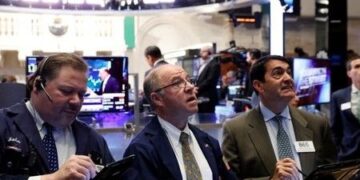The S&P 500 (^GSPC -0.19%) has advanced 2% year to date, but history says the index is headed much higher in the next year. A survey from the American Association of Individual Investors showed 61.9% of respondents were bearish during the week ended April 3, which means they expected the market to decline over the next six months.
Bearish sentiment has only topped 60% in eight weekly surveys since 1987. In this case, the tariffs imposed by the Trump administration were responsible for the widespread pessimism, but all previous incidents have something in common: Stocks were always much higher a year later.
In fact, the S&P 500 has returned an average of 27% in the 12 months after bearish sentiment readings above 60%. That may sound counterintuitive, but extreme pessimism is typically a contrarian signal because most situations are less dire than they first appear. In this scenario, the S&P 500 closed at 5,397 on April 3. If its performance matches the historical average, the index will advanced 27% to 6,854 by next April.
That implies 13% upside from its current level of 6,040. Of course, past results are never a guarantee of future performance, but investors can still lean into historical trends provided they maintain a long-term mindset. Here’s why Amazon (AMZN 0.08%) and CoreWeave (CRWV 0.92%) are smart investments today.
Image source: Getty Images.
1. Amazon
Amazon runs the largest e-commerce marketplace outside of China, and its market share in the United States is forecast to top 40% this year. It is the largest retail advertising company in the world with nearly 40% market share, and Amazon Web Services (AWS) is the largest public cloud with 29% market share in infrastructure and platform services.
Amazon is using artificial intelligence (AI) to generate revenue and improve efficiency across its businesses. CEO Andy Jassy says the company is building 1,000 generative AI applications to streamline retail workflows, including tools for coding, customer service, inventory management, and last-mile delivery. Morgan Stanley recently called Amazon’s retail business the “most underappreciated” generative AI beneficiary in the tech space.
Meanwhile, Amazon is leaning into AI demand in its cloud business. The company designed custom chips for AI training and inference that offer better price performance than leading graphics processing units (GPUs), according to Andy Jassy. AWS also added a generative AI development platform called Bedrock, which complements its machine learning service SageMaker.
“Our AI business has a multibillion-dollar annual revenue run rate, continues to grow triple-digit year-over-year percentages, and is still in its very early days,” Andy Jassy told analysts on the first-quarter earnings call.
Wall Street expects Amazon’s earnings to increase at 10% annually through 2026. That makes the current valuation of 35 times earnings look expensive, but I think analysts are underestimating the company. Amazon beat the consensus estimate by an average of 21% over the last six quarters. Patient investors should feel comfortable buying a small position today.
2. CoreWeave
CoreWeave provides infrastructure and software services through its dedicated GPU cloud. While Amazon and Microsoft offer similar products, CoreWeave is differentiated in that its cloud platform is purpose-built to support AI tasks, such as training large language models and running inference on machine learning applications.
CoreWeave has eight years of experience managing GPU-accelerated cloud infrastructure, and the company has become quite adept. It regularly reports best-in-class results at the MLPerf benchmarks — objective tests that measure the performance of AI systems across various workloads. In turn, SemiAnalysis recently ranked the platform as the best GPU cloud on the market.
CoreWeave reported impressive financial results in Q1. Revenue increased 420% to $981 million, and non-GAAP operating income (which excludes stock-based compensation and interest on debt) rose 550% to $162 million. Management also said its revenue backlog rose 63% to $25.9 billion due primarily to a deal signed with OpenAI in March.
Investors should be aware that CoreWeave stock is particularly hot right now. Its share price has advanced about 285% since the company went public less than three months ago. Additionally, the current valuation of 29 times sales is rather expensive. But I think the premium is justified for a company that is not only growing sales at a triple-digit pace but has also achieved a 73% gross profit margin in the recent quarter.
John Mackey, former CEO of Whole Foods Market, an Amazon subsidiary, is a member of The Motley Fool’s board of directors. Trevor Jennewine has positions in Amazon. The Motley Fool has positions in and recommends Amazon and Microsoft. The Motley Fool recommends the following options: long January 2026 $395 calls on Microsoft and short January 2026 $405 calls on Microsoft. The Motley Fool has a disclosure policy.

















